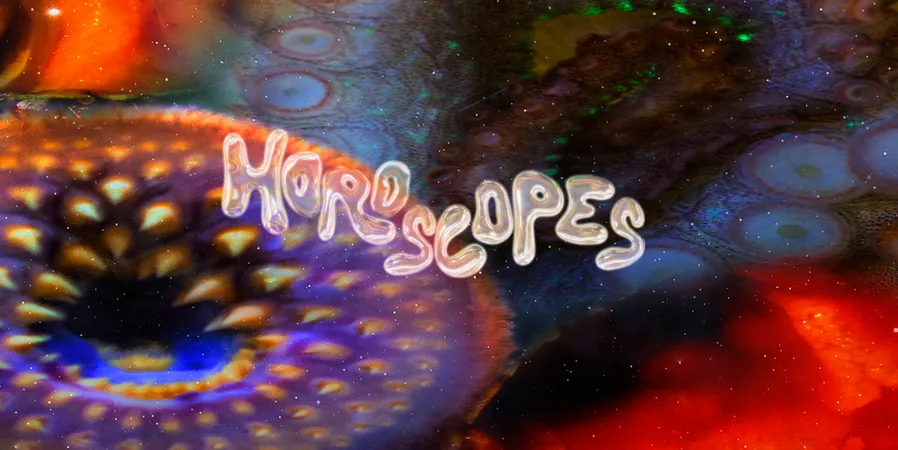
Distant Exoplanet Could Host Volcanic Moon Similar to Jupiter's Io – Shocking New Discoveries!
2024-10-10
Author: Sophie
Introduction
New research from NASA's Jet Propulsion Laboratory has uncovered intriguing signs that a distant exoplanet, located about 635 light-years away from Earth, may have a rocky, volcanic moon. This exoplanet, known as WASP-49 b, is a gas giant roughly the size of Saturn. One of the most compelling pieces of evidence is a sodium cloud that appears to be orbiting the planet, though its behavior raises questions and requires further investigation.
Background on Sodium Cloud
The sodium cloud was first identified in 2017, drawing the attention of Apurva Oza, a former postdoctoral researcher at NASA who is now a staff scientist at Caltech. Oza's research has primarily focused on the detection of exomoons—moons that orbit planets outside our solar system—especially those exhibiting volcanic activity akin to that of Io, Jupiter's most volcanically active moon. Io's constant eruptions release vast amounts of gases, creating a cloud that extends nearly 1,000 times Jupiter's radius.
Challenges in Detection
While no exomoons have been definitively confirmed to date, many candidates have been proposed. Their elusive nature can be attributed to their small size and faintness, making them difficult to detect with current astronomical tools.
Implications of the Sodium Cloud
The sodium cloud around WASP-49 b is noteworthy; its detection suggests that it is producing approximately 220,000 pounds (100,000 kilograms) of sodium per second—far more than what could be expected from either the star or exoplanet alone, which are primarily composed of hydrogen and helium with trace sodium. This conundrum leads scientists to propose the possibility of it being generated by a volcanic exomoon.
Observational Techniques
Challenging observations are necessary, as the vast distance causes the star, planet, and sodium cloud to overlap significantly in the sky, complicating efforts to track their movements. Observational data, published in the Astrophysical Journal Letters, indicates that the cloud's size sometimes surged suddenly, suggesting a 'refueling' process likely due to another celestial body. Incredibly, the cloud appears to move faster than WASP-49 b, defying traditional physics that would apply if it were simply part of the planet's own atmosphere.
Research Team and Methodology
The research team, including Julia Seidel from the European Southern Observatory, employed sophisticated telescope observations to locate the cloud at heights above WASP-49 b's atmosphere. They also created computer models proposing that a volcanic moon with an orbit of about eight hours could account for both the cloud's behavior and its unusual motion.
Potential Discoveries and Implications
Detecting an exomoon has the potential to redefine our understanding of planetary systems outside our own. As stated by planetary geologist Rosaly Lopes, “The evidence is very compelling that something other than the planet and star are producing this cloud.” The prospect of finding a volcanic moon not only excites astronomers but also encourages further exploration of exoplanetary systems.
The Fate of a Volcanic Moon
However, if such a moon exists around WASP-49 b, it might face a violent fate. Earthly volcanoes draw their energy from the residual heat of planetary formation, while Io's volcanoes are powered by gravitational interactions with Jupiter. Oza's team anticipates that a moon of similar composition and size to Earth's could eventually be torn apart by the immense gravitational forces exerted by WASP-49 b.
Conclusion
“If there really is a moon there, it will have a very destructive ending,” Oza cautioned, underscoring the dynamic and often perilous nature of celestial bodies in the universe. As we delve deeper into these distant worlds, the merging of theory and observation may lead to unprecedented discoveries that could change our understanding of planetary formation and volcanic activity beyond our own solar system. Stay tuned for more groundbreaking revelations in the field of exoplanetary research!









 Brasil (PT)
Brasil (PT)
 Canada (EN)
Canada (EN)
 Chile (ES)
Chile (ES)
 España (ES)
España (ES)
 France (FR)
France (FR)
 Hong Kong (EN)
Hong Kong (EN)
 Italia (IT)
Italia (IT)
 日本 (JA)
日本 (JA)
 Magyarország (HU)
Magyarország (HU)
 Norge (NO)
Norge (NO)
 Polska (PL)
Polska (PL)
 Schweiz (DE)
Schweiz (DE)
 Singapore (EN)
Singapore (EN)
 Sverige (SV)
Sverige (SV)
 Suomi (FI)
Suomi (FI)
 Türkiye (TR)
Türkiye (TR)